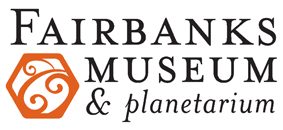
Wildflower Table
Our Wildflower Table is a living display that reflects the diversity of flowers, grasses, berries, ferns and evergreens found in Vermont’s Northeast Kingdom and the northern reaches of the upper Connecticut River Watershed.
This exhibit has been part of the Museum since 1903, when a simple arrangement of vases with wildflowers in bloom set out by Museum staff. With time, the Wildflower Table has grown to include some 400 species displayed throughout the year, in both fruit and flowering stages.
Since its earliest days, the Museum’s wildflower collection practices have depended on dedicated and trained team of staff and volunteers who collect and catalogue the specimens twice a week. A logbook contains over a century of entries that document the first local bloom date for each species of plant.
The seasonal cycle begins in late winter with early blooming Pussy Willow and continues through December with winter evergreens. Annual entries record some dwindling species, such as club mosses, Partridge Berry, some spring wildflowers, and many orchids. Other plant varieties have been introduced to the area that were not present a century ago, such as Purple Loosestrife or Bird’s-foot trefoil. Some non-native plants such as Chicory reflect the flow of European migrants to New England. One such plant, the Red Clover (Trifolium pratense), is now such an accepted wild plant in Vermont that is has become Vermont’s official State Flower.
What’s blooming?
This Wildflower Gallery is a collection of first blooms, identified with location and date and any other details we can gather. You can build a virtual bouquet with images from your wanderings. Post your pictures with as much information to identify them as you can, including the date, habitat (roadside, meadow, wetland, forest) and any other details you’d like to include to our Virtual Flower Table on Facebook.
